Progress
Since 2011 British business has been on a journey to achieve gender balance through voluntary, business-led action and Government support. Our latest report findings, published in February 2025, show:
- Positive momentum in the drive to increase the number of women at the highest level of British business as FTSE 350 companies report a year-on-year uplift in women on Boards (43%) and in Leadership roles (35%)
- There is a significant gap however in the number of women holding executive board roles at about one in six, compared with those in non-executive board roles which are now at parity
- With one year to go and over 60% of the FTSE 350 achieving or close to meeting the target of 40% women’s representation by the end of 2025 – companies are urged to accelerate their efforts to close the gap at the Leadership level
- The focus remains on the Four Key Roles of Chair, Senior Independent Director, CEO and Finance Director, which are generally improving in gender balance, but with the exception of Senior Independent Director, have some way to go to achieve 40%
- Gender diversity at the top of the UK’s biggest private businesses is keeping pace with the largest public listed companies and is in lockstep with the FTSE 100 with women in Leadership reaching 37%
The UK is a world leader for women on Boards and is second only to France in the G7 international rankings, just behind France and ahead of Canada – testament to the power and impact of the UK’s unique voluntary approach.
Women on Boards
Last year the FTSE 350 achieved 40% Women on Boards three years ahead of the target deadline. Since then British business have made further gains, evidence there is room for more progress still. The appointment rate is creeping towards gender parity (46%), meaning almost as many Board appointments are going to women as men.
Just over a decade ago in 2011, 152 of FTSE 350 Boards had no women – thankfully today the All-Male Board is a relic of the past. However three years have now passed since the Hampton-Alexander 33% target deadline, and 21 companies are yet to achieve that target. It appears these companies, while reputable in many other ways, are still struggling to embrace and retain women as leaders on their board. The companies with the highest and lowest female representation can be found in our latest report.
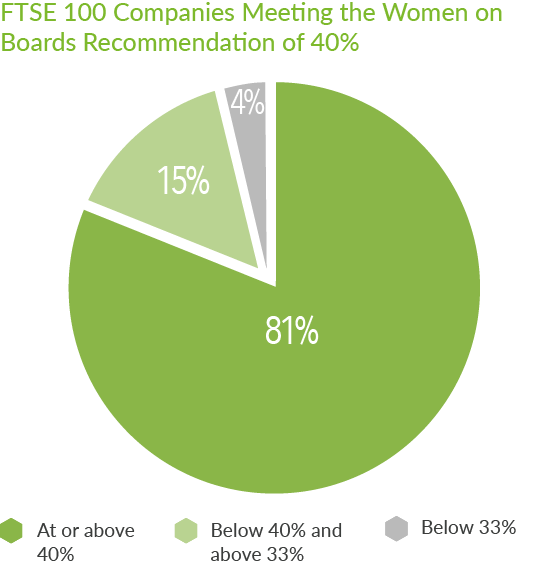
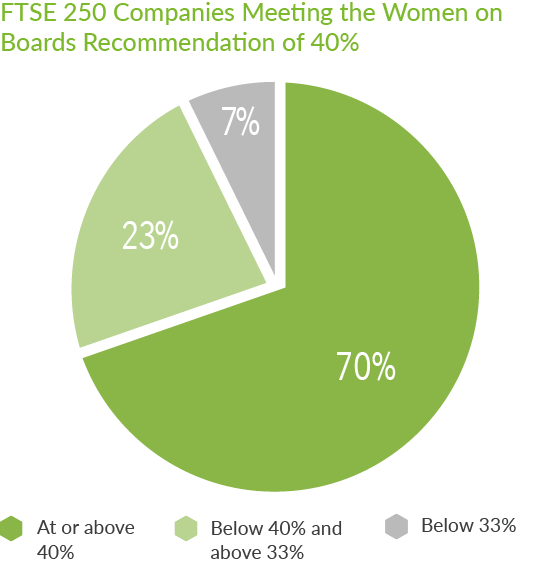
Women in Leadership
The FTSE 350 continue to make steady progress with women holding 35.3% of leadership roles (defined as the Executive Committee and their Direct Reports). Yet the appointment rate for women in FTSE 350 companies is 39%, meaning more than six in every ten available roles in the year went to men. This is difficult to comprehend when there is no shortage of capable women eager and ready to step into leadership roles.
Gender balance at the top of British business is clearly in sight but the job is not yet done – almost every other appointment now needs to go to a woman to meet the 40% target by the end of 2025. Around a quarter of companies are leading the way in already exceeding the target, whilst others now must accelerate their efforts to get across the finishing line.
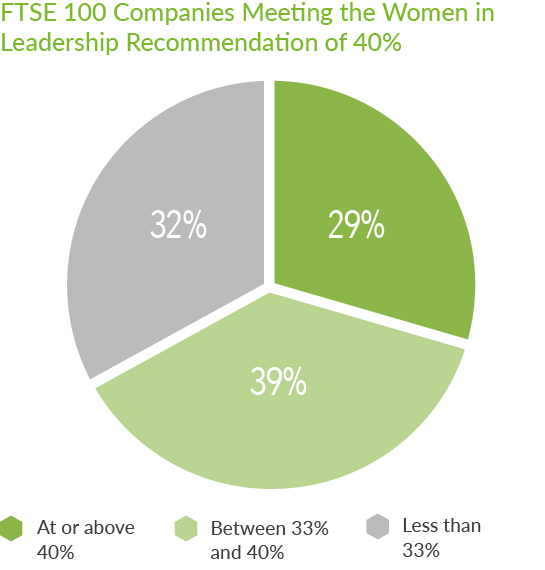
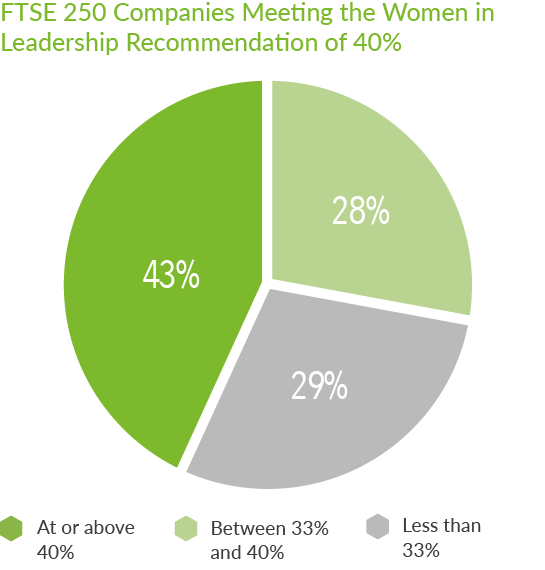
The companies ‘doing very little’ are slowing the pace of change and dragging overall progress down. Leaders of such companies are urged to treat gender balance like any other serious business matter, to commit and take action.
The Four Key Roles
Along with targets to achieve gender balance, progress for women into the very top jobs is another important measure of success. Recommendation 2 requests each FTSE 350 company to appoint a woman into at least one of the four key roles; Chair, Senior Independent Director, CEO and Finance Director. Focus on the UK’s biggest and most influential top jobs will ensure individual businesses and the wider economy can benefit from diverse perspectives and experiences.
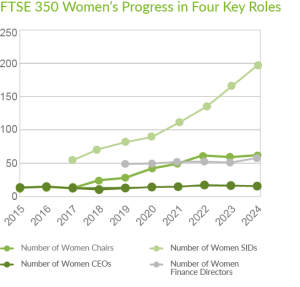
It is clear faster progress is needed, with women making up just 17% of Chairs, 7% of CEOs and 22% of Finance Directors. Despite these challenges there is cause for celebration – there are now more women Senior Independent Directors than men (56%) – a significant rise from just 16% women SIDs seven years ago. This indicates a strong pipeline for women progressing to Chair roles in the future. Undoubtedly the stand-out disappointing statistic amongst a sea of progress at every level and in the majority of roles, is the number of women CEOs. This was always going to be the toughest hill to climb but the focus must remain on increasing women’s representation in the broader leadership landscape as this is where our future CEOs, FDs and other influential business leaders will emerge. Every female appointment to a leadership role deserves recognition and celebration.
50 Largest Private Companies
In the third year of reporting on the UK’s 50 Largest Private Companies, it is clear many have been actively addressing gender balance for some time as evidenced by their willingness to participate and visible progress. There has been a welcome increase in the representation of women in Leadership, rising to 37%, and continuing to keep pace with their public-listed peers. However there remains greater divergence in progress at Board level, with more polarisation. Over a third of private companies are performing strongly with 40% or more women on the Board, while over half are still trailing below 33%, some even down at zero.

The number of women in the four key roles is encouraging; women make up 19% of CEOs and 24% of CFOs. Undoubtly there is more to do, but the influence of the push for gender balance in public-listed companies, coupled with changing societal and business norms, has clearly played a role in bringing about change. For the full list of the 50 Largest Private Companies included in scope, click here.



